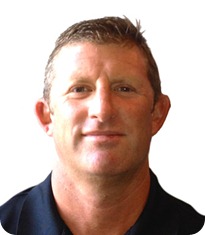
Could you please give a brief introduction to what non-surgical orthopedic medical devices are?
Non-surgical orthopedic medical devices are products designed to help relieve pain in specific parts of the body. The non-surgical orthopedic product category encompasses devices for problems of the musculoskeletal system, which practically includes the entire body, from the knee to the hand to foot and ankle. The musculoskeletal system includes bones, joints, ligaments, tendons, muscles, and nerves - everything you need to move about comfortably.
The largest non-surgical orthopedic medical devices subset is functional braces. Functional braces are designed with the objective of allowing normal joint kinematics while limiting unwanted displacements and rotations between the tibia and femur that might detrimentally strain a healing ligament or graft or produce intra-articular injury.
What have non-surgical orthopedic medical devices traditionally been used for?
Most often, non-surgical orthopedics are used for rehabilitation, pain management and physical therapy. They are designed to aid in recovery from injuries, reduce or alleviate pain and improve overall comfort. Orthopedic products can improve your overall quality of life and help you to live pain free.
After a surgery, surgeons will often recommend orthopedic products for the patient to wear during recovery and rehabilitation, especially in the case of sports injuries. For athletes, the knee is the most common part of the body that requires orthopedic surgery and support. After orthopedic knee surgery, athletes will often wear a knee brace to provide relief from pain, help to speed up recovery and can help to prevent future injuries. Functional braces have long been used by the sports medicine community to treat instability of the knee due to an ACL disruption, to protect an ACL graft, and to prevent knee ligament injuries during sport.
However, non-surgical orthopedics are not limited to sports injuries. Non-surgical orthopedics can also be used to treat conditions such as chronic pain and osteoarthritis (OA).
Why are non-surgical orthopedic medical devices such as functional braces increasingly transcending into the mainstream consumer market?
Osteoarthritis is the leading cause of disability in the United States, affecting one in two Americans in their lifetime. This staggering statistic will likely grow as the average age and weight of the population steadily increases. OA occurs due to natural bodily aging and wear and tear on a joint, causing bones to rub together. With half the population poised to suffer the effects of this degenerative disease, millions are or will be looking for quick, effective and economic options for maintaining or regaining their activity levels and quality of life.
How is DJO Global adapting its products to suit this need?
DJO Global’s DonJoy brand pioneered the concept of functional bracing more than 30 years ago and has consistently led the industry of performance bracing by studying the body, listening to athletes, consulting physicians, talking to patients and pushing the envelope of innovation.
DonJoy bracing products are proven by clinical research and have long been favored by professional athletes and 21 out of 25 AP college football teams. DJO Global is now changing how the market approaches osteoarthritis (OA) knee bracing by bringing its DonJoy brand expertise, experience and technology long favored by high performing athletes to devices for everyone.
The recent launch of DonJoy’s OA Nano is one example of how the company is pioneering how the market approaches OA knee bracing by bringing its expertise, experience and technology previously reserved only for high performing athletes to the mainstream. OA Nano is the world’s lightest functional osteoarthritis knee brace. Designed by the same team of experts that developed braces favored by professional athletes, OA Nano has the potential to be the best-performing knee brace on the market for patients with mild-to-moderate osteoarthritis who want to reduce knee pain and increase knee stability in order to maintain an active lifestyle. Revolutionary in weight and profile, OA Nano offers industry-leading comfort and pain relief, ensuring that patients will choose this safe, non-surgical treatment over other options.
Where are DJO Global’s products available from?
OA Nano is available by prescription and is covered by most insurance providers.
Why are healthcare payers requiring patients to complete a continuum of conservative care treatment options before approving joint replacement surgery?
It makes sense that doctors should go through a treatment protocol that begins with simple treatments such as over the counter pain medications and bracing, with products such as OA Nano, before jumping to more extreme measures such as partial or total knee replacement surgeries. Non-surgical treatment options are cost effective, which is beneficial to all parties involved.
How do you think the future of non-surgical orthopedic medical devices will develop?
We anticipate that the market will steadily grow as the population ages and average weight rises. Patients seeking quick, effective and economic options will also drive innovation in the market. Consumers, concerned with aesthetics, comfort, pain reduction and ease of use, will drive the design of orthopedic medical devices.
What are DJO Global’s plans for the future?
DJO Global is helping to change that perception with products like OA Nano. DJO Global will continue to innovate and deliver state-of-the-art orthopedic medical devices and services that enable people to live life to the fullest while maximizing end-users comfort.
Where can readers find more information?
About Brian Moore
 Brian joined DJO Global in 1997 as a Product Manager for Post-Op bracing. He was promoted to Senior Product Manager in 1998 for ACL and Post Op bracing, then promoted to Marketing Manager in 2001 for functional bracing. As a product and marketing manager, he was responsible for over 15 new product releases including Defiance 2 and 3, Armor, 4titude, Fourcepoint hinge and creating a preventative knee bracing market. Brian was then promoted to Director of ATC and PT Sales and Marketing and is now responsible for all sales and marketing to the ATC and PT markets.
Brian joined DJO Global in 1997 as a Product Manager for Post-Op bracing. He was promoted to Senior Product Manager in 1998 for ACL and Post Op bracing, then promoted to Marketing Manager in 2001 for functional bracing. As a product and marketing manager, he was responsible for over 15 new product releases including Defiance 2 and 3, Armor, 4titude, Fourcepoint hinge and creating a preventative knee bracing market. Brian was then promoted to Director of ATC and PT Sales and Marketing and is now responsible for all sales and marketing to the ATC and PT markets.